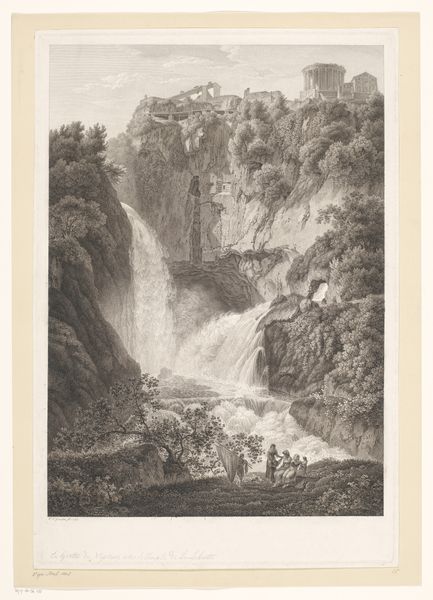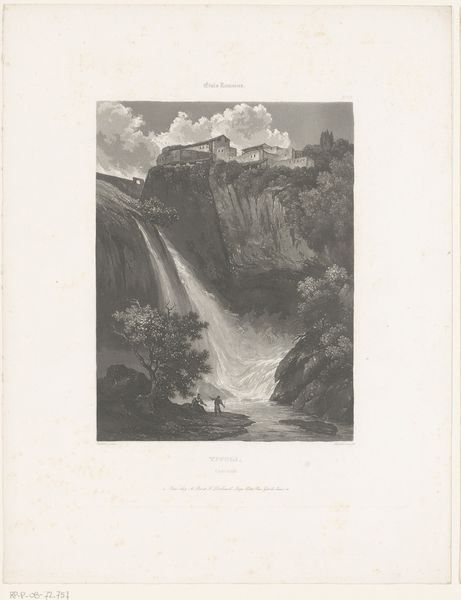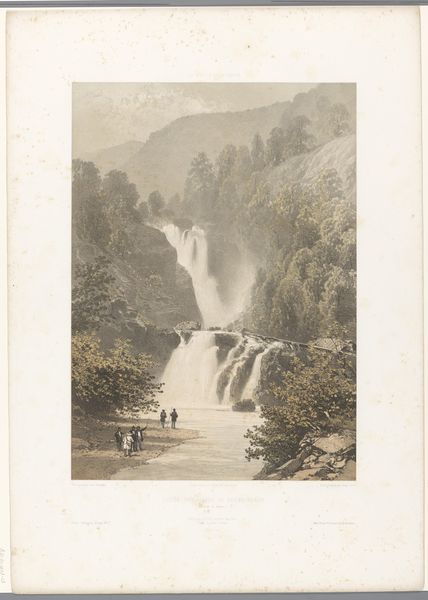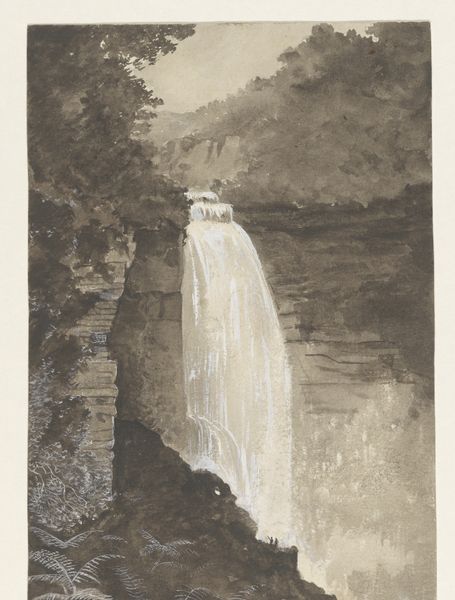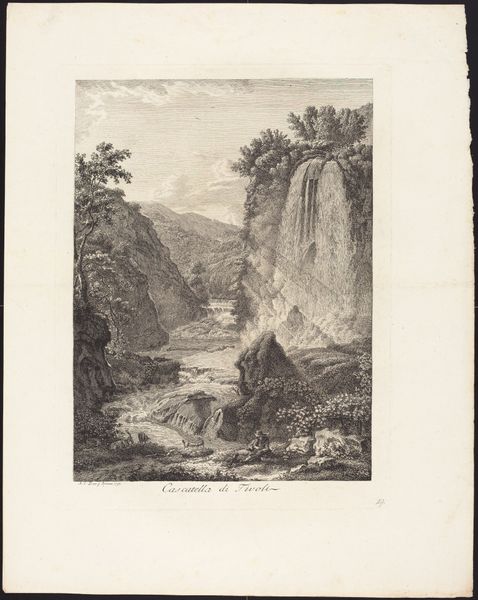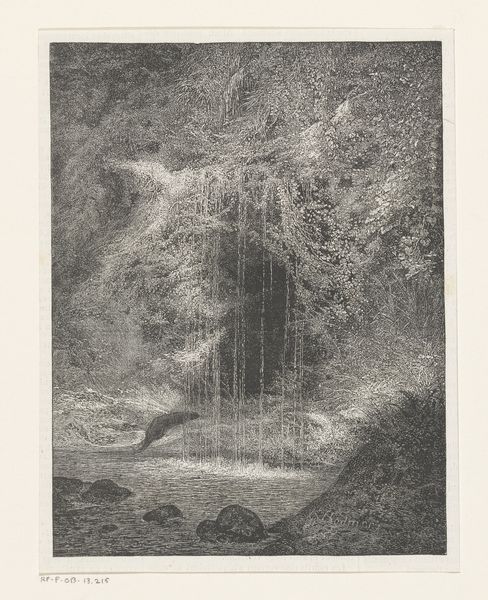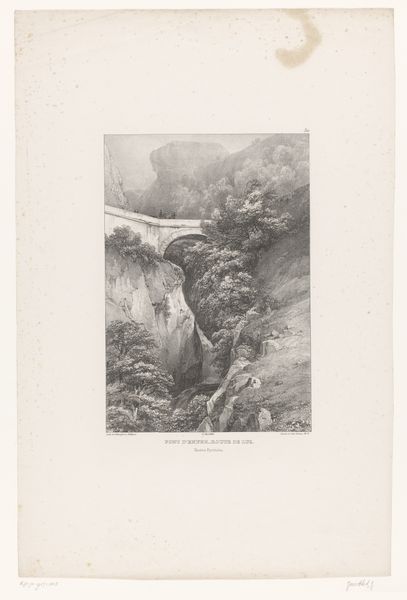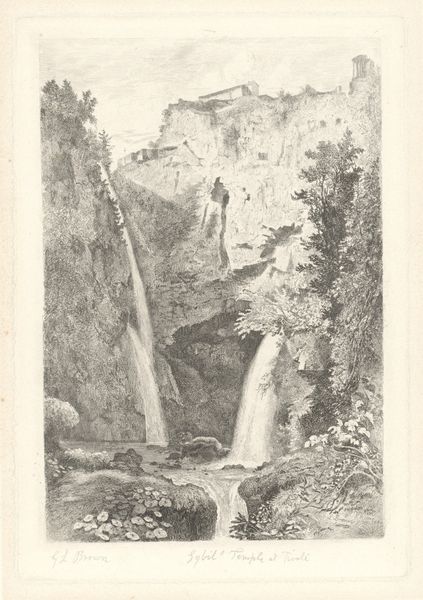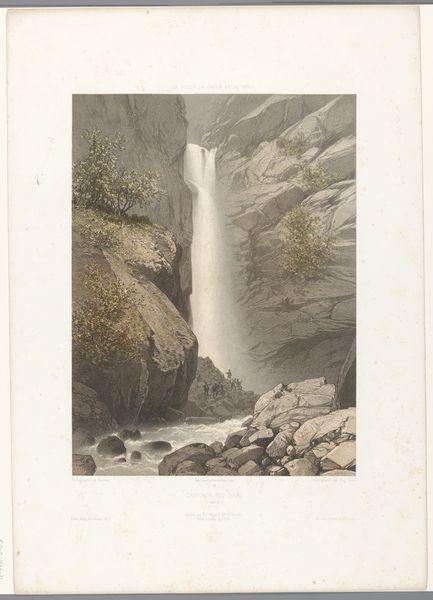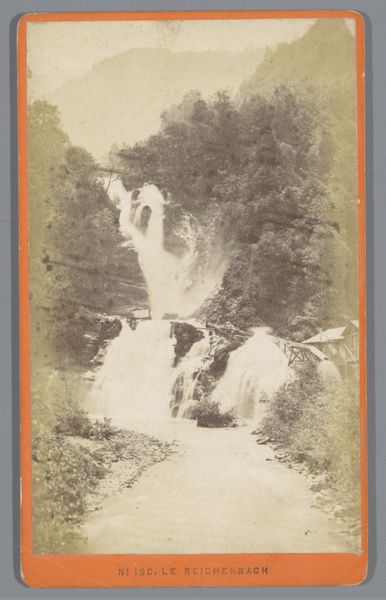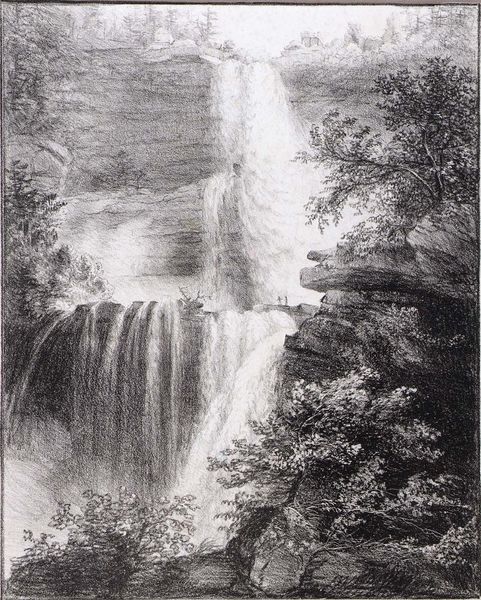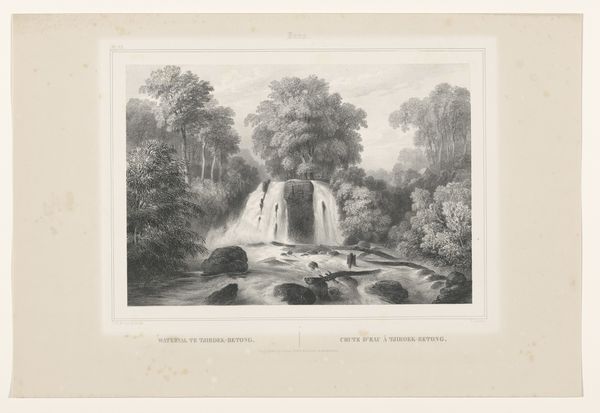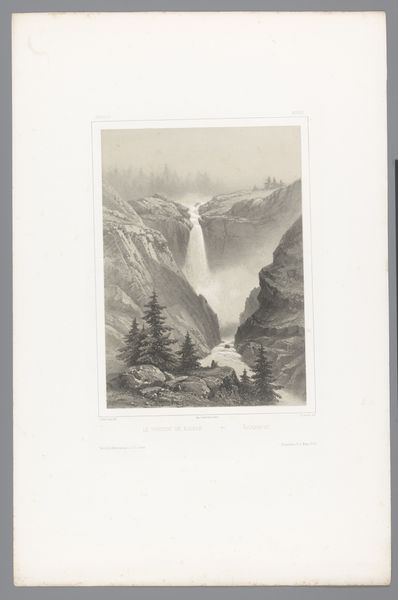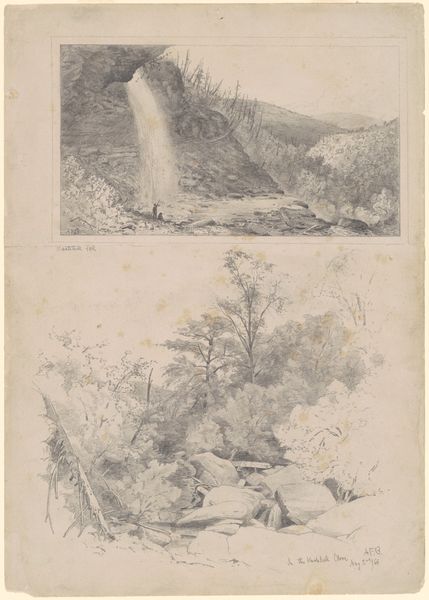
drawing, print, etching
#
drawing
# print
#
etching
#
old engraving style
#
landscape
#
waterfall
#
hudson-river-school
#
water
Dimensions: plate: 8 13/16 x 6 7/16 in. (22.4 x 16.4 cm)
Copyright: Public Domain
Editor: So this etching, "The Falls of the Sawkill" by Asher Brown Durand from 1830, has a really serene feel to it, despite depicting such a powerful waterfall. What strikes you most about it? Curator: What I see is a potent commentary on early American identity and its complex relationship with the land. Durand was part of the Hudson River School, and their work frequently grapples with the concept of manifest destiny and westward expansion, don't you think? Editor: Manifest destiny? In a landscape? I hadn’t considered that. How does that connect here? Curator: Think about it. The artist positions the viewer to admire this 'untamed' natural landscape. However, it is also being implicitly claimed and surveyed. There's a lone figure within the scene, who is read as an explorer or contemplative settler, who’s ‘harmoniously’ integrated. Doesn't this romantic ideal obscure the violent displacement of indigenous peoples? Editor: That’s a perspective I hadn’t considered. I guess I was just seeing pretty waterfalls. Curator: The “pretty” is a constructed narrative. Consider the social context. This was a time when ideas about race, gender, and class were being rigidly defined, and landscape art played a role in reinforcing those power structures. What’s being shown, and more importantly, what is being omitted? Editor: So, we're not just seeing nature; we're seeing a carefully constructed argument about American ownership and dominance. Thanks, I will never look at landscapes the same way! Curator: Precisely! Engaging with the historical context reveals a deeper understanding of how art reflects and reinforces societal norms, even seemingly innocuous landscape scenes.
Comments
No comments
Be the first to comment and join the conversation on the ultimate creative platform.
